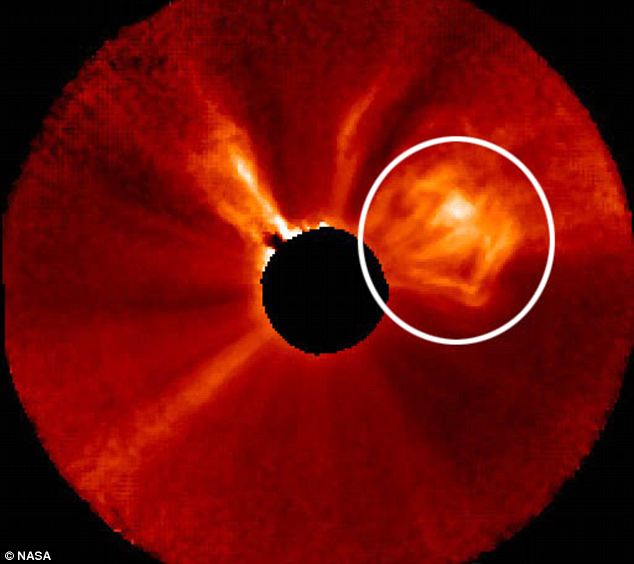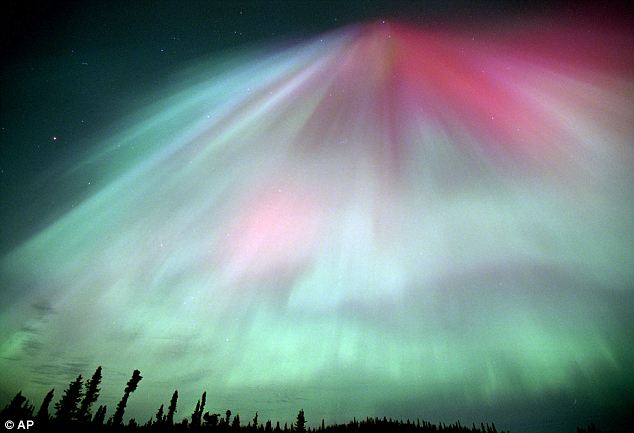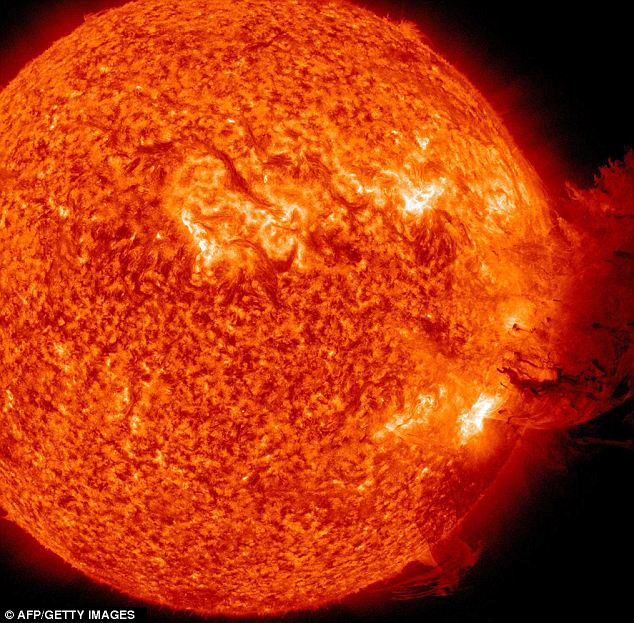Massive solar storm 'could knock out radio signals' over next three days, warn scientists
Last updated at 3:23 PM on 28th December 2011
Skywatchers will be hoping for clear skies from today because particles from a recent solar storm will slam into Earth and produce amazing Northern Lights, or auroras.
On the downside, experts expect radio blackouts for a few days, caused by the radiation from the flare – or coronal mass ejection (CME) – causing magnetic storms.
The flare is part of a larger increase in activity in the Sun, which runs in 11-year cycles. It is expected to peak around 2013.
SCROLL DOWN FOR VIDEO

It's coming this way: The CME, seen by Nasa's STEREO-B spacecraft, can be seen blasting out from the Sun on the right-hand side (circled)

Stunning Northern Lights are expected in the next few days from radiation produced by a huge solar flare
The National Oceanic and Atmospheric Administration’s Space Weather Prediction Center wrote: ‘Category G1 (Minor) geomagnetic storms are expected 28 and 29 December due to multiple coronal mass ejection arrivals. R1 (Minor) radio blackouts are expected until 31 December.’
Devices that depend on radio waves include GPS systems, radios and
mobile phones.
A coronal mass ejection contains billions of tons of gases bursting with X-rays and ultraviolet radiation that are flung into space at around 5million mph.
They are mind-bogglingly hot – around 100,000,000C.
The Earth is occasionally hosed by these ejections, leading to amazing shimmering light shows.

Heat is on: Solar flares spray gases out at 5million mph and at 100,000,000C. Pictured is a flare that erupted in June this year
They are caused by the ionised solar particles becoming imprisoned by Earth’s magnetic field, exciting the gases in the atmosphere and emitting bursts of energy in the form of light.
However, these particles can also cause magnetic storms, which in extreme cases have been known to disrupt satellites and electricity grids.
In 1989, a CME was held responsible for leaving six million people in Quebec, Canada, without power.
Last month one of the largest storms our star can produce was detected.
Known as an X1.9 flare, it was one of the biggest seen in years.
The flare was so powerful that it disrupted communications systems on earth a short time later.
Another gigantic flare occurred in August - shown in the video below - but because it took place on the side of the Sun not facing Earth, there was no disruption to communications or power.